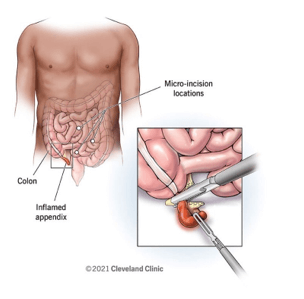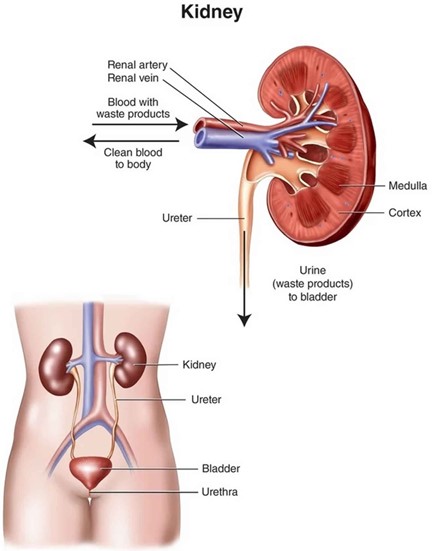When the practical nurse (PN) atempts to assist an 18-year-old client with a mild mental disability to ambulate on the first postoperative day after an appendectomy, she becomes angry and says, "PN, 'Get out of here! I'll get up when I'm ready!"
Which response is best for the PN to make?
A. "You must ambulate to avoid complications which could cause more discomfort than ambulating."
B. "I know you feel angry about the pain of ambulation, but this is a necessary part of getting well."
C. "Your healthcare provider has left specific instructions to ambulate on the first postoperative day."
D. "I will be back in 30 minutes to help you get out of bed and walk around the room today."
The Correct Answer is D
An 18-year-old client with a mild mental disability is a client who has a lower than average intellectual functioning and some limitations in adaptive skills, such as communication, socialization, and self-care. A mild mental disability may affect the client's ability to understand, cope, or cooperate with medical interventions, such as ambulation after surgery.
Ambulation is the act of walking or moving around. It is an important part of postoperative care, as it helps to prevent complications such as deep vein thrombosis, pulmonary embolism, pneumonia, atelectasis, constipation, and pressure ulcers. Ambulation also promotes circulation, wound healing, and muscle strength.
When the practical nurse (PN) atempts to assist the client to ambulate on the first postoperative day after an appendectomy, the client becomes angry and says, "PN, 'Get out of here! I'll get up when I'm ready!" This may indicate that the client is experiencing pain, fear, anxiety, or frustration due to the surgery and the recovery process .
The best response for the PN to make is to acknowledge the client's feelings, provide reassurance and support, and set a clear and realistic goal for ambulation. This will help to establish rapport, reduce resistance, and motivate the client to participate in the care plan.
Therefore, option D is the correct answer, as it shows empathy and respect for the client's feelings, while also informing the client of the expectation and time frame for ambulation. Option D also allows the client some time to prepare mentally and physically for the activity.

Nursing Test Bank
Naxlex Comprehensive Predictor Exams
Related Questions
Correct Answer is D
Explanation
This is the correct answer because BUN and creatinine are the most important laboratory values to monitor for nephrotoxicity, which is the damage or injury to the kidneys caused by certain drugs or chemicals.
Nephrotoxicity can impair the kidneys' ability to filter waste products from the blood, resulting in elevated levels of BUN and creatinine. The normal range for BUN is 7 to 20 mg/dL, and for creatinine is 0.6 to 1.2 mg/dL. The practical nurse (PN) should review these values before administering an antibiotic that can cause nephrotoxicity, such as aminoglycosides, cephalosporins, vancomycin, or sulfonamides. The PN should also monitor the client for signs and symptoms of nephrotoxicity, such as decreased urine output, edema, hypertension, fatigue, nausea, and confusion.
a) Serum calcium
This is not the correct answer because serum calcium is not directly related to nephrotoxicity. Serum calcium is the amount of calcium in the blood, which is important for bone health, muscle contraction, nerve function, and blood clotting. The normal range for serum calcium is 8.5 to 10.2 mg/dL. Serum calcium may be affected by kidney disease, but it is not a reliable indicator of nephrotoxicity.
b) Hemoglobin and hematocrit
This is not the correct answer because hemoglobin and hematocrit are not directly related to nephrotoxicity. Hemoglobin is the protein in red blood cells that carries oxygen, and hematocrit is the percentage of red blood cells in the blood. The normal range for hemoglobin is 13.5 to 17.5 g/dL for men and 12 to 15.5 g/dL for women, and for hematocrit is 38.8 to 50% for men and 34.9 to 44.5% for women.
Hemoglobin and hematocrit may be affected by kidney disease, but they are not reliable indicators of
nephrotoxicity.
c) White blood cell count (WBC)
This is not the correct answer because WBC is not directly related to nephrotoxicity. WBC is the number of white blood cells in the blood, which are part of the immune system and fight infections. The normal range for WBC is 4,500 to 10,000 cells per microliter of blood. WBC may be elevated in response to an infection or inflammation, but it is not a reliable indicator of nephrotoxicity.

Correct Answer is C
Explanation
Choice A rationale:
Nausea can be a significant factor contributing to decreased food intake, but it is not the most likely cause in this scenario. Xerostomia (dry mouth) and mucositis are mentioned as symptoms in the question stem. Nausea alone does not explain why the client is consuming less than their body requirements.
Choice B rationale:
Fatigue can also contribute to decreased food intake, but it is not the most likely cause in this case. While fatigue can be a side effect of cancer treatment and may lead to reduced appetite, the question specifically mentions xerostomia and mucositis as issues contributing to imbalanced nutritional intake.
Choice C rationale:
Pain when eating is the most likely cause of imbalanced nutritional intake in this scenario. The client's laryngeal cancer and the development of mucositis indicate that eating is likely painful for them. This discomfort can significantly deter the client from eating, leading to decreased nutritional intake.
Choice D rationale:
Altered taste sensation can affect food preferences, but it is not the most likely cause in this case. Pain when eating is a more direct and immediate barrier to food intake, especially in the context of mucositis and laryngeal cancer.
Whether you are a student looking to ace your exams or a practicing nurse seeking to enhance your expertise , our nursing education contents will empower you with the confidence and competence to make a difference in the lives of patients and become a respected leader in the healthcare field.
Visit Naxlex, invest in your future and unlock endless possibilities with our unparalleled nursing education contents today
Report Wrong Answer on the Current Question
Do you disagree with the answer? If yes, what is your expected answer? Explain.
Kindly be descriptive with the issue you are facing.
